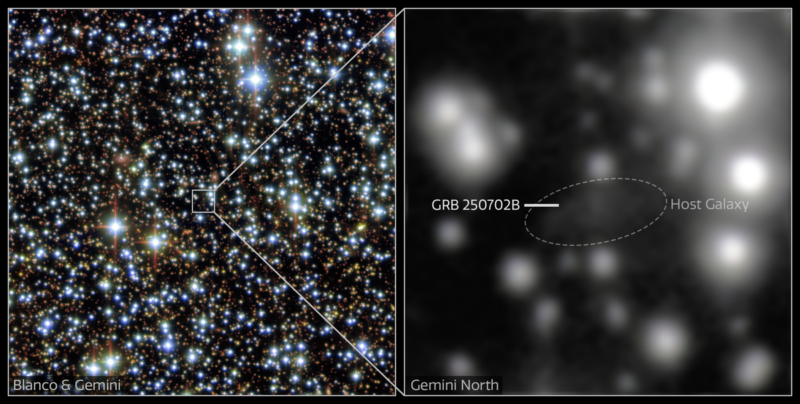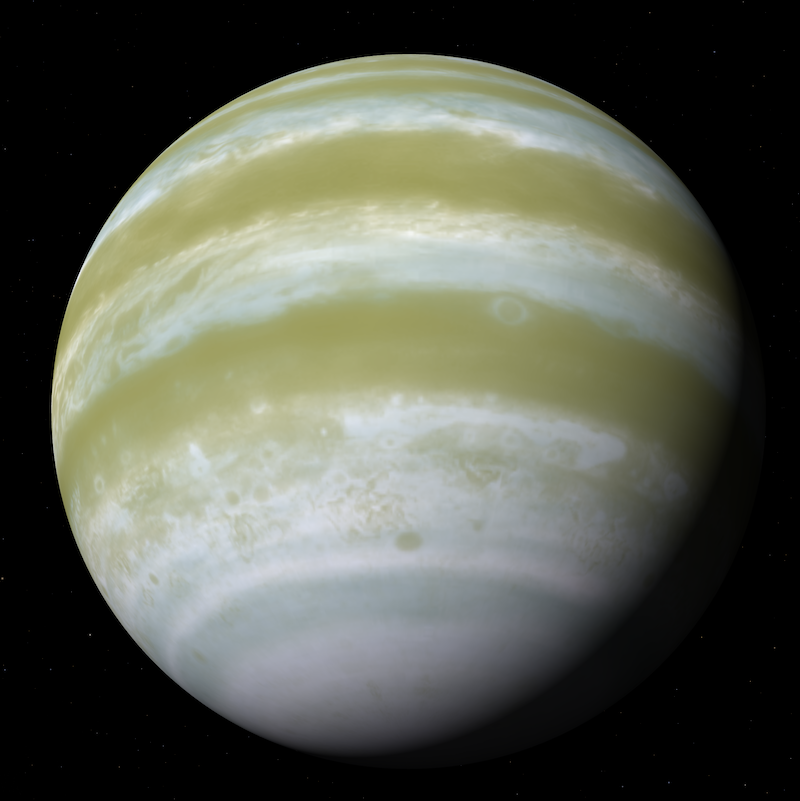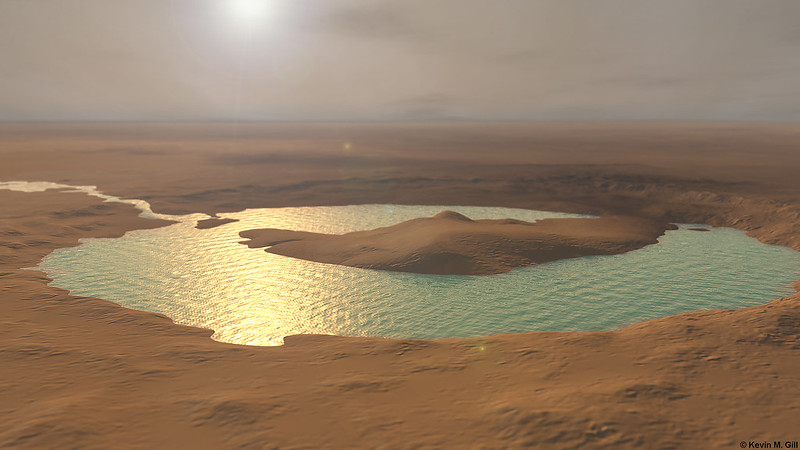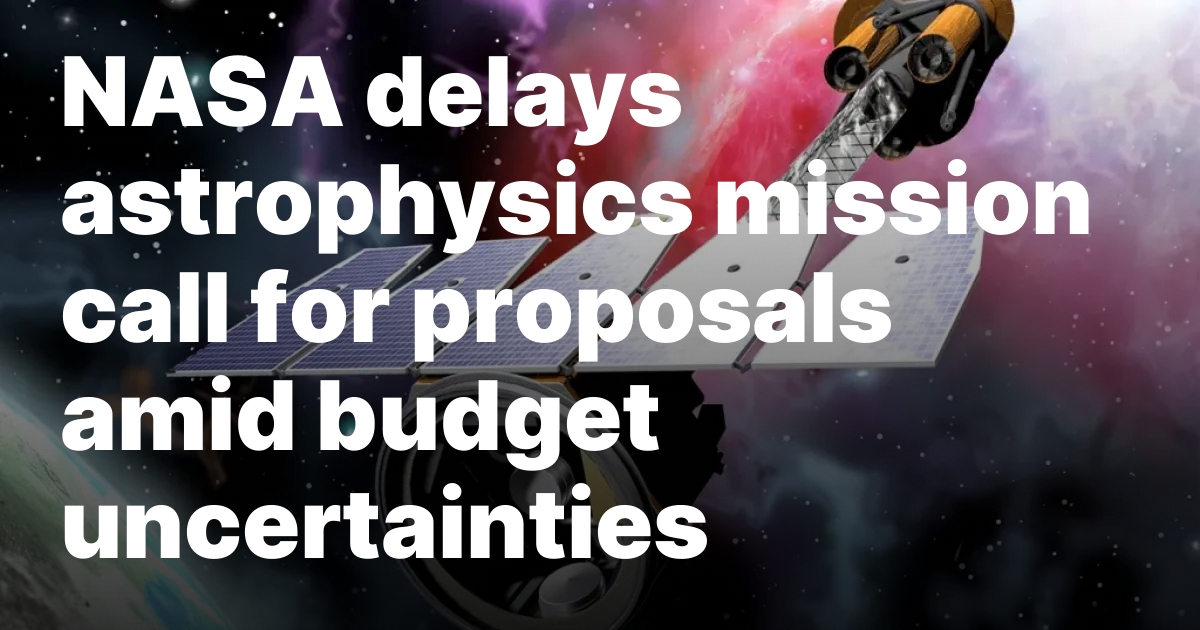Now Reading: Eos: Huge nearby cloud in space was invisible … until now
-
01
Eos: Huge nearby cloud in space was invisible … until now
Eos: Huge nearby cloud in space was invisible … until now

An enormous cloud of molecular gas called Eos clings to the edge of a gigantic structure – the Local Bubble – that our sun resides within. Only 300 light-years away, Eos is in our cosmic neighborhood. What’s the dark cloud made of? What’s it mean for our knowledge of the space around us? What will be its fate? Find out in this video as astrophysicist Jack Hughes talks with EarthSky’s Dave Adalian.
- Molecular clouds are huge clouds of gas and dust in space, composed mostly of hydrogen.
- Astronomers just discovered a new cloud, named Eos. It’s one of the closest known to our solar system, but it surprisingly had remained undetected until now.
- Researchers found it using a new ultraviolet observing technique, with the Korean satellite STSAT-1.
Molecular clouds are huge interstellar structures, composed mostly of hydrogen gas and dust. Astronomers have spotted them throughout our Milky Way galaxy and beyond. And an international team of researchers has just identified an enormous molecular cloud on Earth’s doorstep, undetected until now. They said on April 27, 2025, that the cloud – named Eos – is one of the closest ever seen to our solar system. And it’s one of the largest single structures ever seen in space.
The researchers published their peer-reviewed results in Nature Astronomy on April 28, 2025.
Eos: Discovery of a dark molecular cloud in space near our solar system. Video via Thomas Müller (HdA/MPIA)/ Thavisha Dharmawardena (NYU)/ YouTube.
Meet Eos, a huge nearby cloud in space
Eos is a crescent-shaped molecular cloud about 300 light-years from our solar system. It resides on the edge of the Local Bubble, a huge “cavity” in space filled with gas, which is about 1,000 light-years across.
And Eos is big. Even though it’s just made of gas and dust, scientists estimate Eos to be 3,400 times more massive than the sun. If you could see Eos with the unaided eye, it would span 40 full moons across the sky.
But Eos won’t last forever. The researchers estimate it will disperse about 6 million years from now.
The name Eos comes from the Greek goddess of dawn. In addition, the cloud’s name refers to a proposed new space mission that would broaden the search for molecular clouds in our Milky Way galaxy.

A vast, invisible hydrogen cloud in space
So how did the astronomers find Eos? Molecular clouds are mostly hydrogen. And hydrogen molecules will “glow” in ultraviolet light, even though they can’t be seen in regular light. So, using the far-ultraviolet spectrograph (FIMS-SPEAR) on the Korean satellite STSAT-1, the astronomers looked for the ultraviolet emission of molecular hydrogen. Lead author Blakesley Burkhart, in the Department of Physics and Astronomy in the Rutgers School of Arts and Sciences in New Jersey, said:
This is the first-ever molecular cloud discovered by looking for far-ultraviolet emission of molecular hydrogen directly. The data showed glowing hydrogen molecules detected via fluorescence in the far ultraviolet. This cloud is literally glowing in the dark. It was kind of like just waiting to be explored. This opens up new possibilities for studying the molecular universe.
Intriguingly, Eos had been “invisible” to astronomers until now. Why didn’t they detect it before? The researchers say it’s because even though Eos is mostly hydrogen, it doesn’t have a lot of it. As a result, this makes Eos what’s known as a “dark” molecular cloud, which is difficult to detect with more conventional techniques.
OK, OK, so maybe it's not about us. Turns out that researchers have identified an enormous cloud of invisible, star-forming molecular hydrogen roughly 300 light years away from Earth, which they named…[wait for it]…Eos! www.nature.com/articles/s41…

New clues about the interstellar medium
In addition, molecular clouds like Eos in the interstellar medium – the gaseous space between stars – provide the raw material for the birth of new stars and, subsequently, new planets. Burkhart said:
When we look through our telescopes, we catch whole solar systems in the act of forming, but we don’t know in detail how that happens. Our discovery of Eos is exciting because we can now directly measure how molecular clouds are forming and dissociating, and how a galaxy begins to transform interstellar gas and dust into stars and planets.
The story of the cosmos is a story of the rearrangement of atoms over billions of years. The hydrogen that is currently in the Eos cloud existed at the time of the Big Bang and eventually fell onto our galaxy and coalesced nearby the sun. So, it’s been a long journey of 13.6 billion years for these hydrogen atoms.
Co-author Thavisha Dharmawardena, a NASA Hubble Fellow at New York University, added:
The use of the far-ultraviolet fluorescence emission technique could rewrite our understanding of the interstellar medium, uncovering hidden clouds across the galaxy and even out to the farthest detectable limits of cosmic dawn.

Molecular clouds near and far
On a related note, another Burkhart-led study, using the Webb Space Telescope, has found what might be the most distant hydrogen molecules known. Burkhart said:
Using JWST, we may have found the very farthest hydrogen molecules from the sun. So, we have found both some of the closest and farthest using far-ultraviolet emission.
Bottom line: Using a new technique, astronomers have discovered a huge molecular cloud in space near our solar system, dubbed Eos. It had remained undetected until now.
Source: A nearby dark molecular cloud in the Local Bubble revealed via H2 fluorescence
Read more: Huge Local Bubble drives formation of new stars
Read more: Dark cloud near Milky Way’s center is strangely quiet
The post Eos: Huge nearby cloud in space was invisible … until now first appeared on EarthSky.
Stay Informed With the Latest & Most Important News
Previous Post
Next Post
-
 012024 in Review: Highlights from NASA in Silicon Valley
012024 in Review: Highlights from NASA in Silicon Valley -
 02Panasonic Leica Summilux DG 15mm f/1.7 ASPH review
02Panasonic Leica Summilux DG 15mm f/1.7 ASPH review -
 03From Polymerization-Enabled Folding and Assembly to Chemical Evolution: Key Processes for Emergence of Functional Polymers in the Origin of Life
03From Polymerization-Enabled Folding and Assembly to Chemical Evolution: Key Processes for Emergence of Functional Polymers in the Origin of Life -
 04How New NASA, India Earth Satellite NISAR Will See Earth
04How New NASA, India Earth Satellite NISAR Will See Earth -
 05And Thus Begins A New Year For Life On Earth
05And Thus Begins A New Year For Life On Earth -
 06Astronomy Activation Ambassadors: A New Era
06Astronomy Activation Ambassadors: A New Era -
07SpaceX launch surge helps set new global launch record in 2024




















